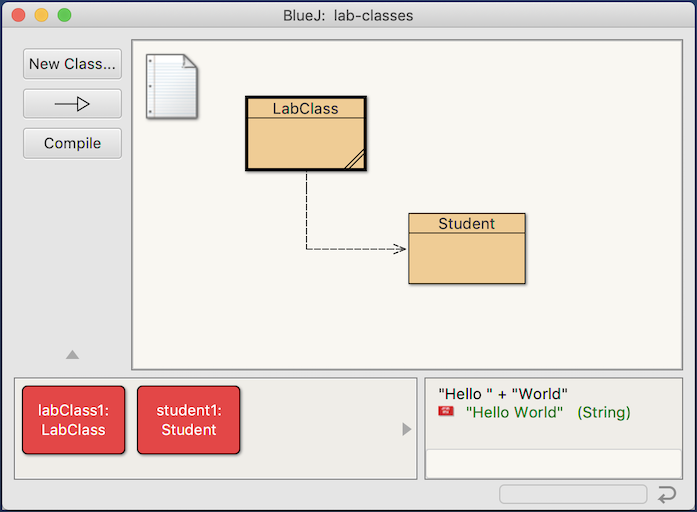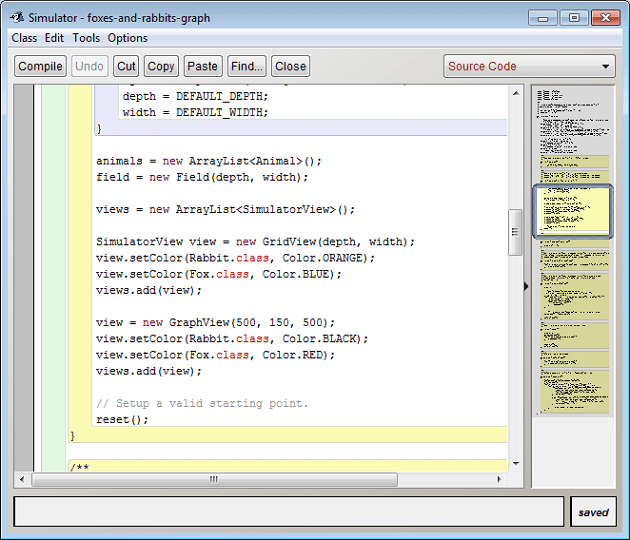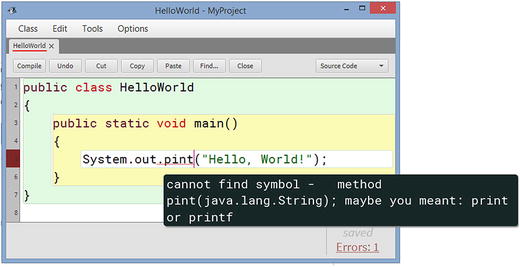
On the Mac, BlueJ comes bundled with a Java Development Kit, JDK, so only a single download is needed. Download the Duke/Coursera specific version; Expand the downloaded ZIP file; Move the BlueJ application from the resulting folder to your preferred location; Windows. Right click, or control click if you have a single button mouse on the BlueJ icon. Related searches Dr Java Mac Download » bluej latest version 3.1.1 free download » download latest version of bluej » free download bluej latest version 2.2.5 » download bluej latest version » bluej latest version download » download bluej latest version. BlueJ is an integrated development environment for Java, focused on teaching. To use it, you have to install the Java 5 JDK, unless you did that already. First you have to get the right version of BlueJ. It's 205, as of writing this. Luckily, you can (after a little investigation) find all older versions of BlueJ on their website: Download version 205 here. In case you need a different version.
These are the instructions for the generic BlueJ installer (the installer 'for other operating systems'). This installer can be used on most Unix-like operating systems as well as Mac OS X and Windows. However, it is generally preferable to use the 'native' installer when available.
The generic installer requires that a Java JDK be installed separately. There are two possibilites depending on the version of BlueJ:

- For BlueJ 4.2.0 and later, OpenJDK 11 and OpenJFX 11 are required, which are only available for 64-bit operating systems. You can download the OpenJDK from the official site, which is a zip which you must unzip locally. You also need OpenJFX 11 -- download the SDK download for your operating system from Gluon. Again, this is a zip which you should unzip locally. The BlueJ installer will ask you for the path of the unzipped directories.
- For BlueJ 4.0.0 to 4.1.4 a Java 8 JDK is required, and we recommend installing the latest JDK 8 update -- you can download the Oracle JDK from the Oracle website. Make sure to get the JDK (not the JRE) and to download the correct version.
Installation Procedure
- Download the installer, making sure to keep track of where it is in the filesystem.
- Start your Command Prompt or Terminal application. You will complete the installation by typing some commands into this application. (For Windows users, see these instructions for how to start the Command Prompt).
Run the following command:
... replacing <path-to-bluej-installer> with the correct path to the installer .jar file that you downloaded.
If you receive a 'command not found' or similar error, you may need to specify the full path to the Java executable. For example:
(this example is for Windows; other operating system paths normally use '/' as a path separator!).
- The installer should start and present a window where you can specify both the path to the JDK, and for BlueJ 4.2.0 the path to OpenJFX, (make sure it is correct!) and where you want BlueJ to be installed. It is usually best to install BlueJ somewhere under your home folder. Take note of the path as you will need it to run BlueJ later.

Running BlueJ
Bluej Org Free Download
To run BlueJ:
On Windows:
- Start the Command Prompt application.
Change into the directory where you installed BlueJ:
... replacing <path-to-bluej-installation> with the path you chose to install BlueJ to.
- Start the BlueJ batch file:
On other operating systems:
- Start the Terminal application.
Change into the directory where you installed BlueJ:
... replacing <path-to-bluej-installation> with the path you chose to install BlueJ to.
- Start the BlueJ shell script file:
Support
Bluej Download Free

Download Bluej For Windows 10 32 Bit
Please see the support links on the main page.

Comments are closed.